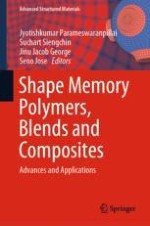2020 | Buch
Shape Memory Polymers, Blends and Composites
Advances and Applications
herausgegeben von: Dr. Jyotishkumar Parameswaranpillai, Prof. Dr. Suchart Siengchin, Dr. Jinu Jacob George, Dr. Seno Jose
Verlag: Springer Singapore
Buchreihe : Advanced Structured Materials
